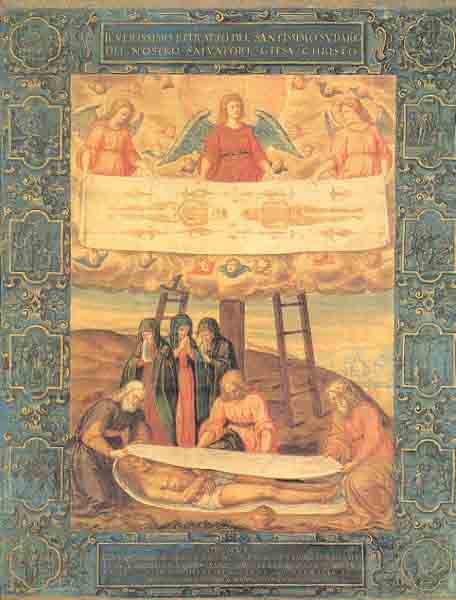Image Details

Galleria Sabaudad, Scala/Art Resource
“The Truest Portrait of the Most Holy Shroud of Our Savior, Jesus Christ,” painted in the 16th century by Italian artist Giulio Clovio. In 1578, the shroud arrived in Turin, after having been kept for more than a century in a castle belonging to the House of Savoy in Chambéry, France. Clovio made the shroud the focus of his painting showing how Jesus’ body might have been wrapped after his death. The framed Latin inscription at the bottom reads: “Let us pray. God, who have left the imprint of your passion for us on the holy shroud in which Joseph wrapped your most holy body after it was removed from the cross, grant that, through your death and burial, we may be led safely to the glory of your resurrection, who live, etc.’ The caption is in the form of a collect, a prayer for a particular occasion. The “etc.” refers to one of several standard final clauses for collects; it probably stands for “who live and reign with you and the Holy Spirit, one God, world without end, Amen.” The mark over the V (u) in “SACRATISSIMV” is an abbreviation indicating that the full spelling is SACRATISSIMVM.
